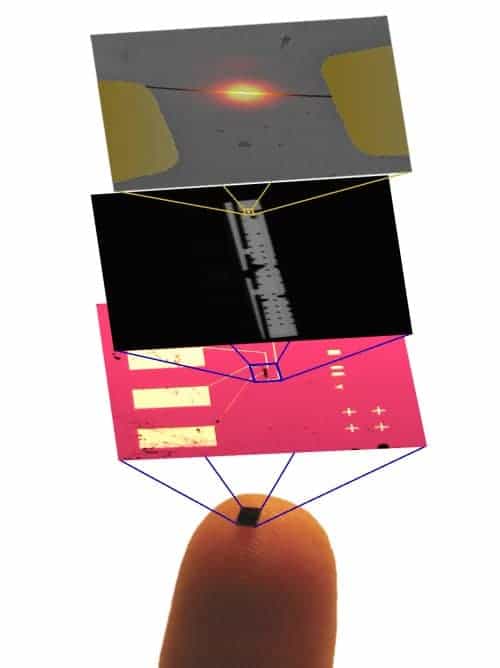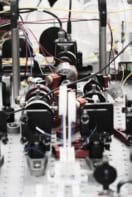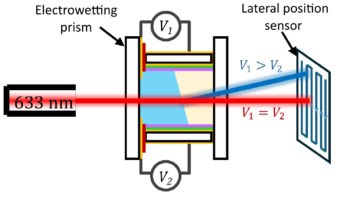
With just a single carbon nanotube for a filament, the world’s smallest incandescent lamp has been made by physicists in the US. The team are using the tiny light to study the murky boundary between quantum mechanics and thermodynamics — and to their surprise, they have found that Planck’s theory of blackbody radiation, which should only apply to large objects, is also relevant at the nanoscale.
Planck’s blackbody radiation law describes thermal radiation emitted by large objects — including light bulbs, the Sun, and the early universe. The law was developed over a century ago using thermodynamics principles, plus one revolutionary new postulate — the idea that light was quantized.
This ultimately led to the development of quantum mechanics, which works best when describing just a few tiny particles. Conversely, thermodynamics concerns systems with many particles — all the molecules in a litre of air, for instance.
Just 100 atoms wide
The new incandescent light bulb was made by Chris Regan and colleagues at the University of California at Los Angeles. The filament is a single carbon nanotube just 100 atoms wide and as such straddles both classical and quantum regimes thanks to its small size. With less than 20 million atoms, the nanotube filament is both large enough for statistical thermodynamics laws to apply, and small enough to be a molecular, or quantum mechanical system.
“Our goal is to understand how Planck’s law gets modified at small length scales,” says Regan. “Since both the topic (blackbody radiation) and the size scale (nano) are on the boundary between the two theories, we think this is a very promising system to explore.”
The researchers constructed the tiny light bulb with the same fabrication tools that the semiconductor industry uses to make computer processors. They lithographically patterned gold wires to connect to a single carbon nanotube suspended over a hole in a silicon chip. They then placed the chip in a vacuum chamber, which serves as the light bulb, protecting the filament from burning.
Driving an electrical current through the filament causes the it to heat up and glow. When off, the filament is too small to be seen, even in an optical microscope, but when energized it appears as a tiny point of light that is visible to the naked eye.
Testing Planck’s law
The team studied the light emitted by the carbon nanotube filament using an optical microscope with various colour filters. “Planck’s law tells us what light intensity to expect as a function of wavelength and temperature,” Regan told physicsworld.com. “By changing the colour filter and the applied electrical current, we can alter both the wavelength and temperature respectively. This allows us to compare Planck’s prediction with what we detect coming from the carbon nanotube lamp.”
The carbon nanotube makes an ideal light bulb filament because it is both very small and stable at extremely high temperatures. Using carbon as a light bulb filament is not a new idea: Thomas Edison’s first commercial light bulbs contained carbon filaments. Indeed, the new bulb is similar to Edison’s except that the filament is 100,000 times narrower and 10,000 times shorter.
Coherent light source?
Looking forward, the team now hopes to investigate the coherence properties of the light emitted by the tiny lamp. Light from quantum sources (such as a laser) can be coherent, but incandescent lamps normally produce incoherent light. “In our case all the incandescence photons are created within a wavelength of each other,” explains Regan, “so we don’t expect them to be as uncorrelated as in a normal light bulb.”



